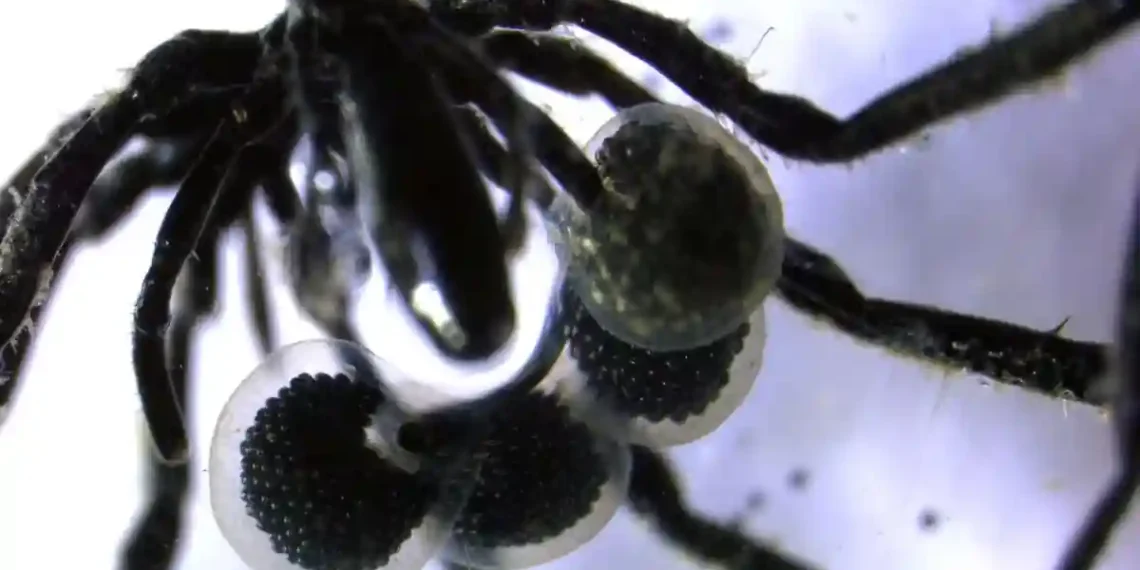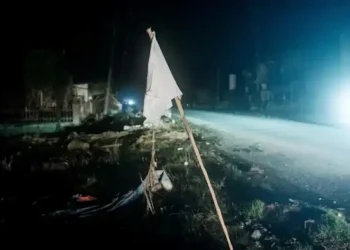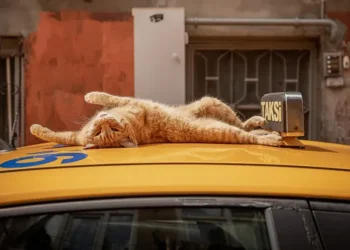First Methane-Powered Sea Spiders Discovered Crawling the Ocean Floor
In a groundbreaking deep-sea discovery, scientists have identified three new species of sea spiders that appear to survive by feeding on methane-fueled bacteria—marking the first time this bizarre diet has ever been observed in sea spiders.
The creatures, part of the Sericosura genus, were found crawling near methane seeps off the U.S. West Coast, thousands of feet below the surface. At those depths, sunlight doesn’t reach, and life relies on chemical energy instead. Here, bacteria thrive by consuming methane bubbling up from beneath the seafloor—methane that is also a potent greenhouse gas. These bacteria, scientists believe, have formed a mutually beneficial partnership with the newly discovered sea spiders.
The Sea Spider’s Unusual Diet
Rather than hunting or trapping prey, these translucent, 1-centimeter-long sea spiders may “farm” bacteria directly from their own bodies. According to lead researcher Shana Goffredi, a biology professor at Occidental College, the bacteria colonize the spiders’ exoskeletons. In turn, the spiders appear to graze on these microbes for nourishment.
“Just like you would eat eggs for breakfast, the sea spider grazes the surface of its body, and it munches all those bacteria for nutrition,” Goffredi said. This behavior is strikingly different from other sea spider species, which typically use fang-like appendages to suck fluids from jellyfish and other soft-bodied prey.
Lab analysis revealed the Sericosura spiders lack those predatory tools, which supports the idea that they rely entirely on their symbiotic bacteria for food.
Symbiosis With a Planet-Saving Twist
Marine microbes that feed on methane don’t just help the spiders—they may also play a bigger environmental role. Goffredi and her team suggest that this spider-bacteria relationship could help prevent methane from reaching Earth’s atmosphere, where it would contribute to global warming.
“Even though they’re small, these animals have a big impact in that environment,” she said. “We can’t ever hope to sustainably use the oceans if we don’t really understand the oceans.”
Nicole Dubilier, a marine biologist and symbiosis expert at the Max Planck Institute in Germany, who was not involved in the study, called the spider-bacteria partnership a “Goldilocks zone” for both creatures. “Even if 80% of the bacterial population gets eaten, it’s worth it for the 20% to survive and reproduce,” she said.
This kind of symbiosis is rare but not entirely unheard of. Other deep-sea creatures like tube worms and sponges have similar methane-based diets. But this is the first time sea spiders have been found doing it.
A Meal That Starts at Birth
The study also uncovered something remarkable about how the spiders pass on their methane-powered lifestyle.
Because these sea spiders are so tiny, many of their organs are crammed into their legs. Females lay eggs from their “kneecaps,” and males scoop them up into bundles that dangle like bracelets from their limbs. After hatching, researchers observed bacteria transferring from the father spiders to the newborns—giving the baby spiders an instant food source.
This kind of microbiome inheritance, Goffredi said, could help scientists better understand how beneficial bacteria—such as those in the human gut—are passed from parent to offspring.
A Fragile, Hidden World
The three new species were found in separate locations off Southern California and Alaska, suggesting they’re highly localized to specific deep-sea habitats. That detail carries a warning.
“People tend to think of the deep sea as a kind of homogeneous ecosystem, but that’s actually untrue,” Goffredi said. “There’s a lot of biodiversity by region. If you disturb one area—like through deep-sea mining—you might be destroying a habitat that doesn’t exist anywhere else.”
As scientists continue to explore the ocean floor, they’re likely to uncover even more strange and specialized life forms like the methane-powered Sericosura. But these discoveries are also a reminder: even the smallest and strangest creatures may hold big secrets—and play vital roles in keeping our planet in balance.
This article was rewritten by JournosNews.com based on verified reporting from trusted sources. The content has been independently reviewed, fact-checked, and edited for accuracy, neutrality, tone, and global readability in accordance with Google News and AdSense standards.
All opinions, quotes, or statements from contributors, experts, or sourced organizations do not necessarily reflect the views of JournosNews.com. JournosNews.com maintains full editorial independence from any external funders, sponsors, or organizations.
Stay informed with JournosNews.com — your trusted source for verified global reporting and in-depth analysis. Follow us on Google News, BlueSky, and X for real-time updates.














